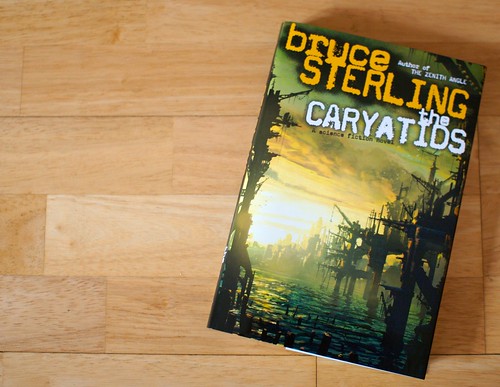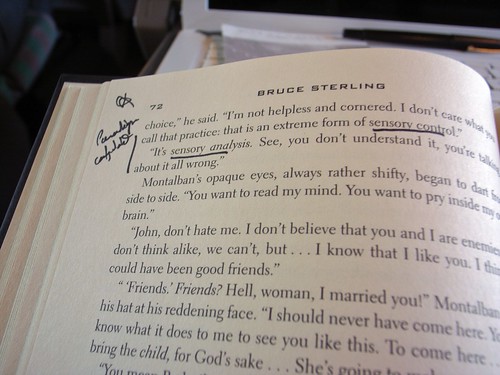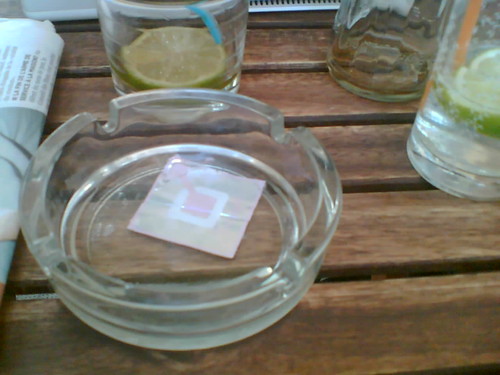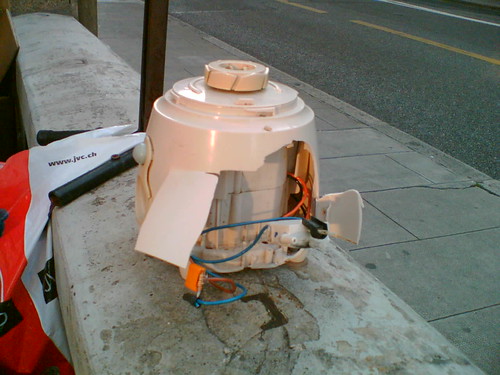A great talk by Kevin Slavin at Eyeo 2013 Ignite, that I transcribed as a background research effort for a book project on internet memes:
“[Image of a bird flock flying around altogether] This is kind of the freebirds of birds. This is like an image anybody can use in a presentation. I used it to talk about this thing that is super profound, it was used earlier today by Mary Franck, to talk about this thing that is fundamentally profound, which is what happens when you start to understand what happens when all these things start to operate in an emergent way and something appear that you couldn’t possibly imagine. You can sort of see this at every scale, i used it to talk about the stock markets, some people used it to talk about the internet, or birds and bugs, but also us, you know, like cells and neurons, genes and chromosomes, that’s basically all we are.
There’s maybe a hundred trillion pieces of genetic information that somehow assemble and put you here on the stage for a couple of minutes, and somehow there is a magic to that that’s not perfectly understood but the part that put the buzz on your head is that only 10% of that genetic information is actually human, and that the rest, like the bacteria inside your mouth, 90% of what’s inside you isn’t really you, it’s a bunch of independent agents that are sort of doing their own thing, they’re not human in any way we understand it, and not all of them are on your side.
So, this is Toxoplasma Gondii [Picture of a bacteria]. If each one of you looks to left or the right of you, one of you brought this here tonight, so it’s about 33% of the global population has this moving through him, and give something called Toxoplasmosis, can’t see it, can’t feel it, can’t hear it but this is what it does: it changes your behavior, it gives you ADHD, it gives you OCD, causes schizophrenia, suicide, enhances the likelihood of you taking a risk and you are more likely to crash your car. It’s real, 1/3 of you, it affects tennis players, olympic runners, hangs out with nobility, affects sea otter with some weird favoritisme… and this is where it gets weird, is Louis Wain, this poor guy, Toxoplasmosis very seriously, led to schizophrenia, Louis Wain gets it. His wife get very very sick, independently, and they adopt a feral cat, and in the process of caring for his wife, he falls in love for the cat a little bit. There’s a couple of things that we know, we know he got Toxoplasmosis very badly and we know that he started drawing cats. And then we know this other things, which is that then through Toxoplasmosis, he developed schizophrenia, he was institutionalised for basically most of this life, and never stopped drawing cats, compulsively, obsessively over and over again. And as they go, it’s like they look a little bit more and more like the virus itself maybe, it’s like a creepy idea. And how do you get there? It gets there through the cat, through the cat shit which somehow is transmitted to his mouth and up into his brain. This is basically how this little virus moves through the world. But how did the cat get it? Well, the answer is surprising. Probably, a mouse, which is weird because mice and cats are not really supposed to hang out together really. Maybe in a fucking cartoon you can imagine such a thing but in reality, this is not really what mice are supposed to do [Picture of Tom and Jerry]. They’re supposed to smell cat piss and be like.. well I’ll go over here because there’s obviously danger over here… unless the mouse has Toxoplasmosis, in which case all of that gets rewired in the brain and it says “hey there’s a cat over there, let’s hang out”.
So, basically, hangs out leads to very predictable results, which are: the cat ends up eating the mouse, which is how the Toxoplasmosis enters another cat, moves, and is then adopted by some poor bastard who transmit it. The question is: what happens when it hits a human? It’s that they have to get more humans to love more cats. And they start drawing cats. And the damage that this guy does is nothing. The damage down there is… this is what’s happening now [videos of cats running around]. This is where is gets serious, this is like cumulatively billions views, this is serious serious shit. This is get global affairs and by the way Walker Art Center fuck you! The Internet Cat Video Festival what are you doing? This is like a virus curator with federal art funds to deal with now, and you look at this [video of a cat on a Roomba vacuum robot] and you see a virus curator, and this is a virus that has somehow hijacked a cat, and also hijacked a robot. And you know what? No good can come of this. Because it’s not just in this machine, it’s deep deep on the networks [Image of a Nyan Cat], you look at this and you see a vector for a transmission, you see a virus being transmitted on into eternity into the future. And every cat video and cat meme, they’re cute and they’re funny but there’s also something happening in there. Everytime you hit share, and everytime you hit like, think about what little piece of you, really likes it, and why.”
Why do I blog this? Because it's a fascinating-and-entertaining description of a common phenomenon these days.
















